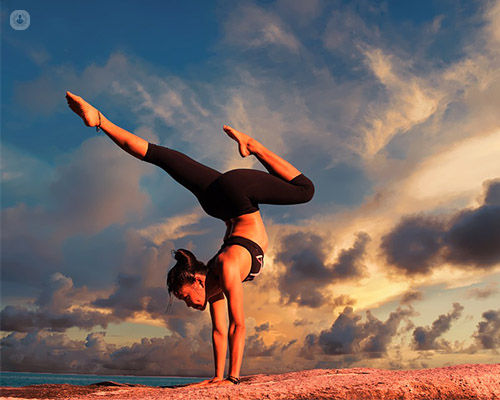Ejercicio para la prevención de las varices
Written by:Sport is a fundamental habit for health and quality of life. In addition, if a patient suffers from venous insufficiency, some sports will help prevent their evolution, since the practice of exercise on a regular basis stimulates the venous return and potentiates the pumping of blood from the extremities, improving circulation and getting more legs healthy.
Sports beneficial for varicose veins
Beneficial sports include aerobics such as walking or running on flat terrain, swimming, cycling (or stationary), yoga (and similar), and rhythmic gymnastics, which, in addition to being fit for all the public and the age, help to stimulate circulation and mobilize the accumulated blood of thighs, calves, soles of feet, etc.
For the benefits to be noticeable, the patient must practice them for at least half an hour in each session, and avoiding the hours of higher temperatures because the heat does not benefit the varicose veins. In the summer months, water sports are gaining prominence. The aquagym is especially indicated both because it is very complete (involves many muscles) and because it can be performed in water, where the pressure acts on the superficial veins benefiting the return by its vasoconstrictor effect. Within swimming, the style most recommended by phlebologists , is the breaststroke, since the legs are the ones that work the most.
There are some sports in which the use of elastic socks is recommended, although they should not stop practicing. These would include weightlifting, mountain biking, some forms of downhill skiing, tennis, squash on hard surfaces and other sports that subject the calf muscles to intense or rapid acceleration.

Sports not beneficial for varicose veins
By contrast there are sports that can hurt if you suffer from varicose veins or other circulatory problems in the legs. They are all those that require continuous jumps or sudden movements like most racquet sports (tennis, squash, fronton, etc.), basketball, handball or volleyball, among others, as they may impair the correct functioning of the venous valves.
Also not recommended are sports such as motorcycling, climbing, horse riding and canoeing, as they force prolonged postures that can compress thighs and calves.
Contact sports that can cause bleeding from venous tears like football, hockey, rugby, judo or karate are not recommended either. Like windsurfing and sailing, by the blows on the board and shocks by action of the sea.
It is also not advisable sports that need to wear inappropriate footwear such as ski boots, ice skating or hockey, as they can compress the return circulation and increase the temperature of the leg. Too intense practice of unprepared sports such as athletics, marathon, trekking, cycling or Nordic competition can fatigue the vein and promote thrombosis of exertion by exercising too much, lacking training or having exceeded the limits of fatigue.
Regardless of the sport practiced, a correct hydration is necessary during its practice, either with water or isotonic drinks because it helps to eliminate the toxic elements of the blood and thus also improve the circulation. When finishing the physical activity it is advisable to take a shower of cold water and to perform massages of lymphatic drainage with moisturizing cream, massaging from the foot to the thigh. If you have the opportunity to rest after exercise it is advisable to do so with your legs raised to help the blood to circulate better.
The use of compression and sports performance when suffering from varicose veins
Venous insufficiency, if important, may limit tissue oxygenation, which may lead to poor athletic performance.
To prevent this, the patient must first consult with a phlebology specialist to determine the most appropriate treatment after a complete ultrasound study.
Steps to follow to prevent varicose veins in high-performance sports
First of all, it is necessary to take into account that, sometimes, the veins adapt to the intense physical exercise thickening, since they need to transport more blood to feed the greater muscular mass. At the same time, these healthy veins stand out because the adipose panicle is diminished and then the very marked veins are noticed: they are the so-called pseudo-varices of the athlete.
Some athletes may see them as an aesthetic inconvenience, especially in the calves, but they are not varicose veins, that is, they are not diseased, they are more developed veins.
If the venous insufficiency is slight it is advisable to use a compression sock to favor the venous return and thus, to attenuate the swelling of the legs and the pain or numbness in the lower extremities.
If there are significant varicose veins should be eliminated. Professional athletes who have removed their varicose veins recognize that they have improved their performance. This is especially important in varicose veins of the back of the leg, since the calf muscles may be limited. These treatments are usually not surgical and can be performed on an outpatient basis with no or minimal rest.


